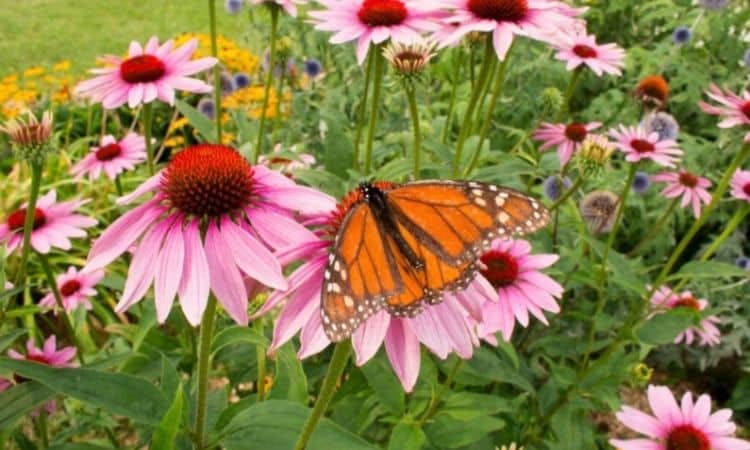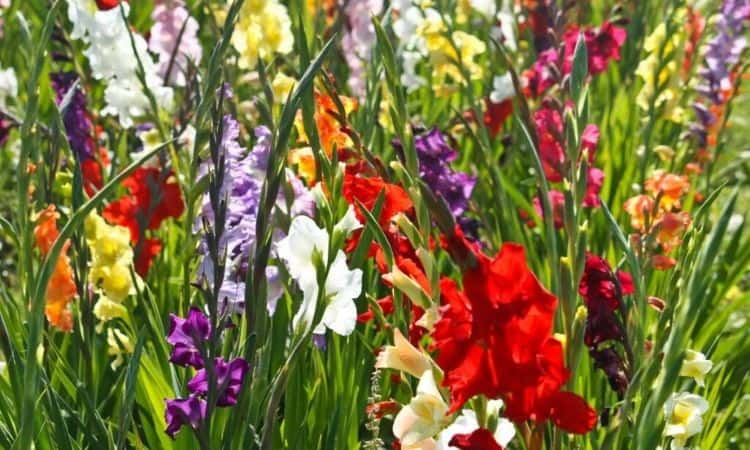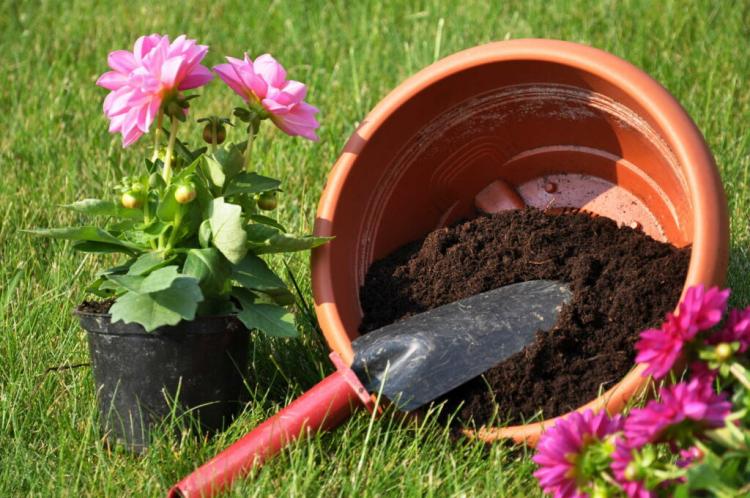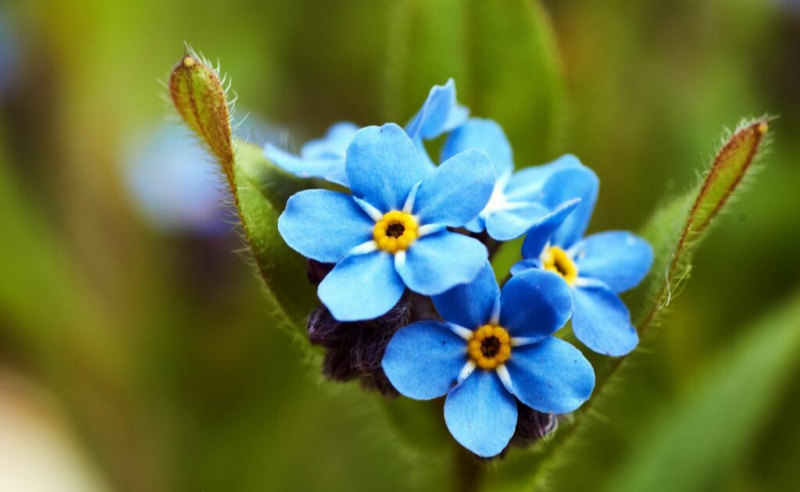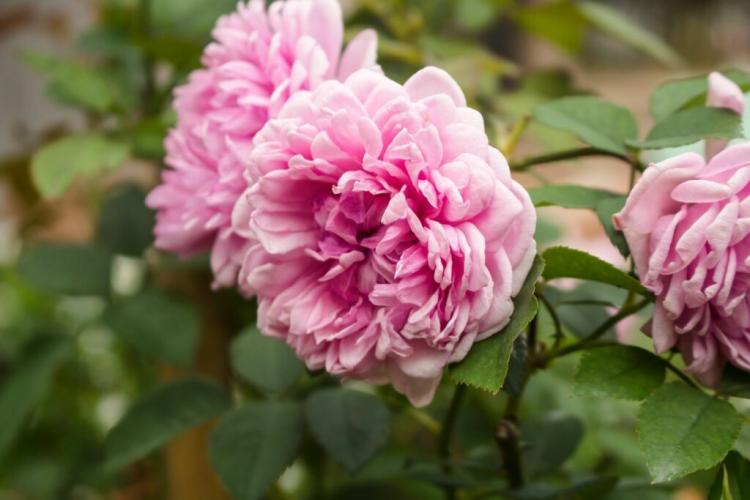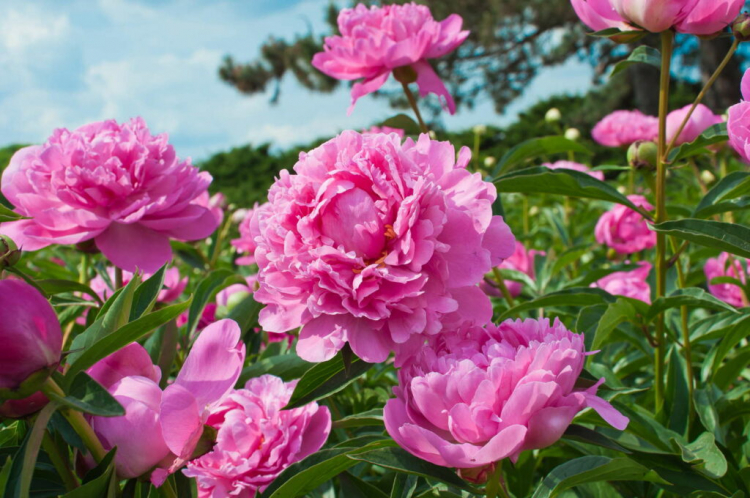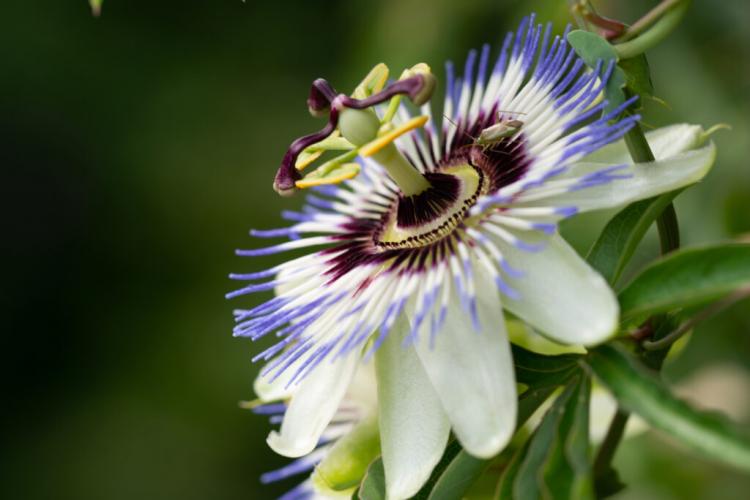Create Perennial Flower Bed: Planting Plan For Sunny And Shady Locations
When creating a perennial bed, there are a number of things to consider – from the season to the correct preparation and selection of suitable plants. We have prepared a planting plan for semi-shady, shady, and sunny locations for you and reveal the best combinations of perennials.
Perennials are among the most valuable plants in the garden: Properly arranged perennial flower beds bloom almost all year round, from early spring to late autumn, providing insects with a rich buffet. The pure variety of plants invites the most diverse insects to feast, hide, and hibernate.
But the correct creation of perennial beds presents many people with an almost insoluble task: Which plants can grow where and how are they best combined? We explain in detail how to create a varied perennial bed and name a large selection of plants for a perennial bed in the sun, in partial shade, and in shade.
Creating A Perennial Flower Bed: The Right Season
Table of Contents
Planting time is in spring and autumn! And this also applies to perennials, because at the beginning and end of the growing season, the plants do not have to struggle with high temperatures and drought during the growing season. Nevertheless, planting with container goods can also be done in summer – but balled or even bare-rooted plants will have a particularly hard time in summer.
Anyone who wants to plant in summer must also be prepared for a watering marathon. Incidentally, planting is best done in cloudy weather, the perennials should be stored in the shade and kept moist before planting.
Tip: If you have a little more space available, you can also include smaller and larger shrubs in your perennial bed. In this way, you can create shady and sunny areas yourself and create a very varied area. We recommend choosing bee-friendly shrubs for this purpose. This way you can listen to the buzzing of the busy insects in summer and enjoy the scent of the flowers yourself.
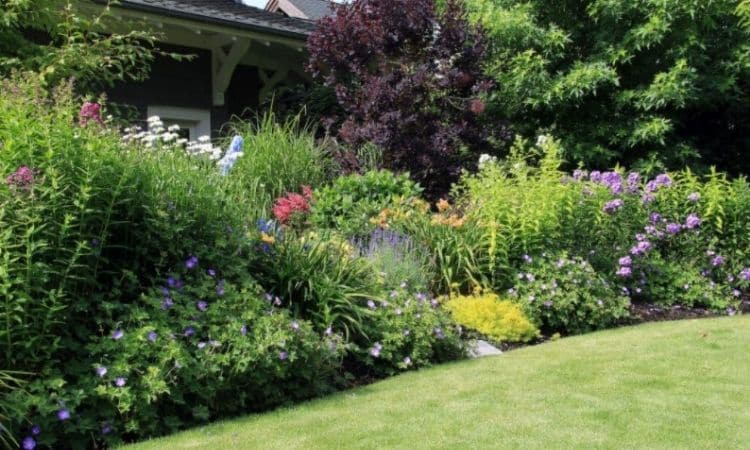
This Is How You Create A New Perennial Flower Bed: Ground Preparation
It doesn’t matter whether you want to replant an existing bed from scratch or rededicate an area that has been used for other purposes: The first step is the planning and preparation of the area. Perhaps curbs still need to be set, old plants removed or lawns cut off. But then the groundwork can begin:
You should start with a soil analysis. Experienced gardeners and experts can draw conclusions about the properties of the soil by looking at it and estimate how nutritious soil is by describing how it has been used and cared for so far. However, laboratory analysis of your soil is always worthwhile before planting a new crop.
Because: Ideally, it is not the soil that is adapted to the plants, but the planting that is adapted to the soil. If you know the properties of the soil, you can modulate them a little bit – more about this below.
Then all weeds – especially the stubborn root weeds – are completely removed. Then the respective material is distributed to improve the soil and is undermined or milled in at a spade deep level.
Has your soil analysis revealed a very low pH value and you do not want to plant a bog bed? Then lime is first applied to slightly increase the pH value.
In general, high-quality potting soils, horse manure or compost enhance all soil types. Especially extremely sandy or heavy, clayey soils benefit from the introduction of this organic material.
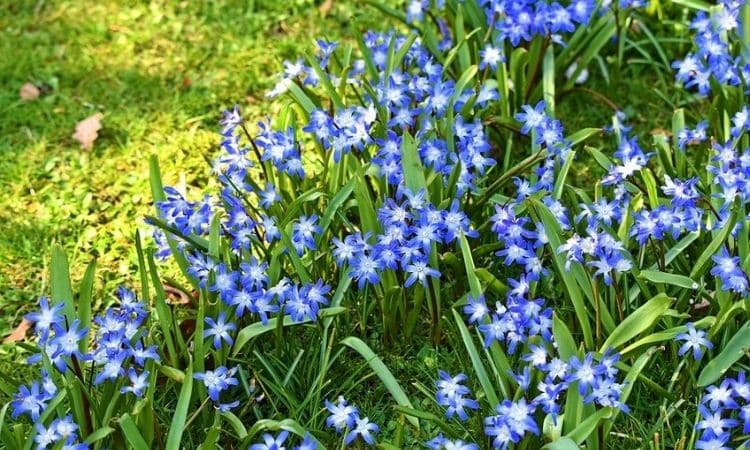
Last but not least, strong basic fertilization with a long-term effect should not be missing: It provides nutrients over a long period of time. Anyone who uses mainly organic fertilizers promotes soil life and thus a fertile subsoil in which the perennials can take deep root and are perfectly supplied with nutrients.
Summary: This Is How You Create A New Perennial Bed
- Prepare the surface: Remove old plants, cut the grass, or create a border.
- Perform soil analysis.
- Adapt the soil properties according to the desired planting.
- Lime to increase the pH value or spread acidic primary rock flour (granite, basalt) to lower it.
- Improve poor soils with plenty of potting soil, horse manure, or compost: Useful on soils that are too light or too heavy.
- Improve heavy clay soils with plenty of sand.
- Improve light sandy soils with clay minerals (sand soil conditioner).
Tip: Where do you get high-quality perennials?
If you are shopping for a new perennial bed, going to a garden center should only be a stopgap solution. It’s better to plan in advance what plants and quantities you need and then make a targeted purchase. You can purchase the plants from a regional perennial nursery or use online mail order. In any case, we recommend that you follow the advice of professional perennial nurseries.
This way you can be sure that you will receive high-quality, healthy, hardy, and strong plants. In addition, the pages of good perennial nurseries contain information on how the perennials are used, for example, whether they are planted individually or in groups, and how hardy they are.
More Similar Post
- Pineapple Flower: Plants, Wintering And The Most Beautiful Varieties Of The Pineapple Lily
- Office Plants: 10 Easy-Care Plants For The Office
- Gardening With Kids: Regrowing And Other Inspirations
Planting Perennial Beds: Our tips
An interesting, lush, richly flowering, and also weed-free perennial bed can be achieved by combining 4 to 5 different types of plants that complement each other.
These plant types are:
- Lead perennials or scaffolders, which stand individually (solitary) and divide the bed. They are particularly high or large and attract attention.
- Accompanying perennials, which flower when the guide perennials are no longer in bloom, thus providing variety in the bed. They are often medium-high, so as not to compete with the framework perennials.
- Filler plants, which are only relevant in the initial phase of a perennial bed. They seed themselves and keep the ground covered so that weeds cannot settle so quickly.
- Ground cover perennials that grow low and flat to cover the space between the larger framework and accompanying perennials in the long term. They suppress weeds permanently.
- Optional: Flower bulbs and tubers that can be used to make small splashes of color appear in the bed in spring or fall.
In the suggestions below for planting in sunny and dry, semi-shady, or shady areas, the plants are arranged according to this pattern. To create a lush, perennial bed, at least plants of the first 4 plant types should be used.
In addition, you will find an indication of what proportion this type of plant should have in the total area. In this way, you can avoid beds that require a lot of care, for example, beds that are completely overcrowded or heavily weedy.

Planting Plan For A Perennial Bed In A Sunny And Dry Location
Your soil analysis showed that your soil is rather sandy and the location is sunny? Instead of completely turning the soil upside down, you should plant perennials that are adapted to these conditions. Use only a small amount of soil or compost and limit yourself to a few clay minerals and fertilizer. Below you will find suitable perennials for sunny and dry locations and the proportion they should have in the area.
10 % of all plants: scaffolding perennials
- Golden yellow (Achillea filipendulina).
- Atlas fescue (Festuca mairei).
- Blue lozenge (Perovskia abrotanoides).
- Fireweed (Phlomis russeliana).
- Plate sedum (Sedum telephium).
- Fongras (Stipa calamagrostis).
- Silk-haired king candle (Verbascum bombyciferum).
30 % of all plants: accompanying perennials
- Pearl basket (Anaphalis triplinervis).
- Mountain Aster (Aster amellus).
- Goldenhair aster (Aster linosyris).
- Gold spurge (Euphorbia polychroma).
- Prairie candle (Gaura lindheimeri).
- Red widow flower (Knautia macedonica).
- Grand Speedwell (Veronica teucrium).
10 % of all plants: Filling Plants
- Rattleflower (Catananche caerulea).
- Yellow scabiosis (Scabiosa ochroleuca).
- Vexian carnation (Lychnis coronaria Alba).
50 % of all plants: ground cover perennials
- Caucasian cranesbill or blood cranesbill (Geranium renardii, Geranium sanguineum)
- Grove Anemone (Anemone sylvestris).
- Small hawkweed (Hieracium pilosella).
- Mint (Calamintha nepeta sbsp. nepeta).
- Optional: flower bulbs and tubers.
- Ornamental leek (Allium nigrum).
- Elf Crocus (Crocus tommasinianus).
- Grape hyacinth (Muscari latifolium).
- Botanical tulip (Tulipa praestans).
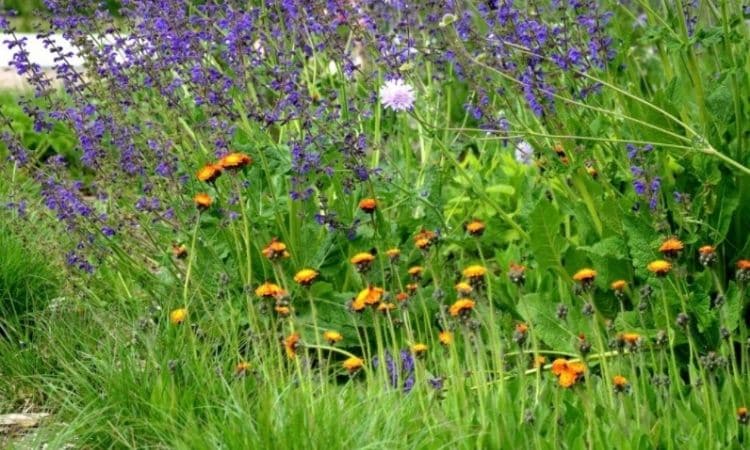
Planting plan for a perennial bed in partial shade
The location of your future perennial bed is semi-shady? After you have picked up a spade and improved the soil with good potting soil or compost and some storage fertilizer, we recommend you choose from the following plants.
These plants like to colonize the semi-shade and grow particularly well there.
10 % of all plants: Skeleton perennials
- Bell Funny (Hosta ventricosa)
- Show leaf (Rodgersia species)
- Diamond Riding Grass (Calamagrostis brachytricha)
- Solomon Mirror (Polygonatum species)
- Large-flowered foxglove (Digitalis grandiflora)
- Flat Threne Grass (Chasmantium latifolium)
30 % of all plants: accompanying perennials
- Purple bell (Heuchera villosa var. macrorrhiza)
- Whitewood aster (Aster divaricatus)
- Beautician (Kalimeris incisa)
- Palm leaf hellebore (Helleborus foetidus)
- Lenzrose (Helleborus x hybridus)
- Candle meadow knotweed (Persicaria amplexicaulis)
10 % of all plants: Filling Plants
- Yellow feigned larkspur (Pseudofumaria lutea)
- Columbine (Aquilegia vulgaris var. stellata)
- Broad-leaved forest bellflower (Campanula latifolia var. macrantha)
50 % of all plants: ground cover perennials
- Fairy Flower (Epimedium x rubrum or Epimedium x versicolor)
- Wild strawberry (Waldsteinia geoides, Waldsteinia ternata)
- Woodruff (Gallium odoratum)
- False mandrake root (Tellima grandiflora)
Optional: flower bulbs and tubers
Siberian Blue Star (Scilla siberica)
Cyclamen Narcissus (Narcissus cyclamineus)
Lilies (Lilium, e.g. variety ‘Claude Shride’ or ‘Hyawatha’)
Angel Tears Narcissus (Narcissus triandrus)
Stalk leek (Allium stipitatum)
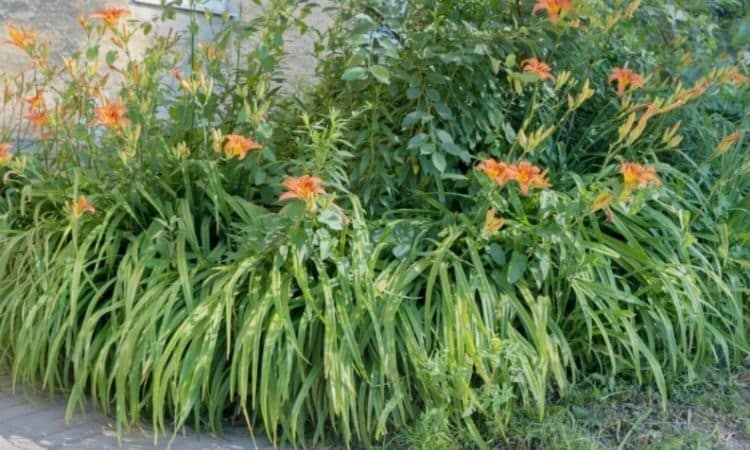
Planting plan for a shrub bed in the shade
The deeper shade is also more than suitable for creating a splendid perennial bed. Here you will find special specialists that not every neighbor has planted in his front garden. Shadow is often found under higher trees or in strips of wood and thus often adds another component: the so-called root pressure, i.e. the competition of several plants in a confined space. We have selected perennials for you that still shine under these doubly difficult conditions.
10 % of all plants: scaffolding perennials
- Giant sedge (Carex pendula).
- Bell Funny (Hosta ventricosa).
- Spiny shield fern (Polystichum aculeatum).
- Summer silver candle (Cimicifuga rubifolia).
- Diamond Riding Grass (Calamagrostis brachytricha).
30 % of all plants: accompanying perennials
- White Forest Aster (Aster divaricatus).
- Beautician (Kalimeris incisa).
- Lenzrose (Helleborus x hybridus).
- Candle meadow knotweed (Persicaria amplexicaulis).
- Italian arum (Arum italicum).
- Bergenia species (Bergenia sp.).
- Caucasian forget-me-not (Brunnera macrophylla).
- Carex species (Carex sp.).
- Eyrie forming Liriope (Liriope muscari).
- Peacock wheel fern (Adiantum pedatum).
10 % of all plants: Filling Plants
- Almond-leaved spurge (Euphorbia amygdaloides).
- Cyclamen (Viola riviniana).
- Columbine (Aquilegia vulgaris , also known as var. stellata).
- Yellow feigned larkspur (Pseudofumaria lutea).
50 % of all plants: ground cover perennials
- Purple bell (Heuchera sp.)
- Forest Golden Berry (Waldsteinia geoides, W. ternata)
- Fairy Flower (Epimedium sp.)
- Small evergreen (Vinca minor)
- Grove ledges (Luzula pilosa, L. sylvatica)
- Common hazel root (Asarum europaeum)
- Japanese sedge (Carex oshimensis)
- Mushroom head sedge (Carex caryophyllea)
- Optional: flower bulbs and tubers
- Leuchtlins-Prärielilie (Camassia leichtlinii ssp. susdorfii)
- Trigrinum Lily (Lilium ‘Claude Shride’)
- Cyclamen Narcissus (Narcissus cyclamineus)
- Balkan anemone (Anemone blanda)
- Spanish bluebell (Hyacinthoides hispanica)
- Dogtooth (Erythronium ‘Pagoda’)
- Elf crocus (Crocus tommasinianus)
- Snowdrops (Galanthus nivalis)
- Small crocus (Crocus chrysanthus)

Expert Tip: Arrange and plant perennials correctly
Before planting, it makes sense to display the perennials in their pots on the prepared bed. Arrange the plants according to your wishes: The guide perennials can be placed individually or in small groups of three, starting from which the accompanying perennials are usually placed. Here you can be completely free and creative.
The ground-cover perennials are placed between the leader and accompanying perennials, and finally, the bulbs and bulbs are placed in small tuffs. When everything is positioned according to your wishes and at the right distance, you can also see if there are any missing plants. Now the perennials are potted and planted and of course watered extensively with the garden hose.
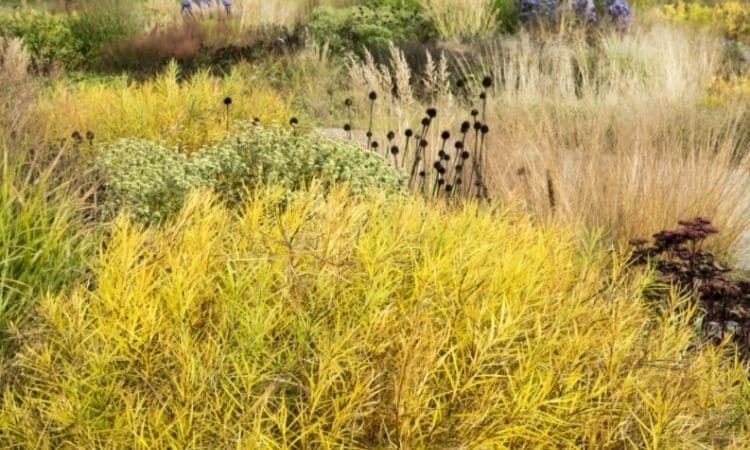
Once the perennial bed has been laid out and develops into a multi-layered sea of leaves, the amount of maintenance required for such an area is very low. However, it makes sense to provide an occasional supply of nutrients by fertilizing the perennials to support the dense and weed-suppressing growth of the plants.
